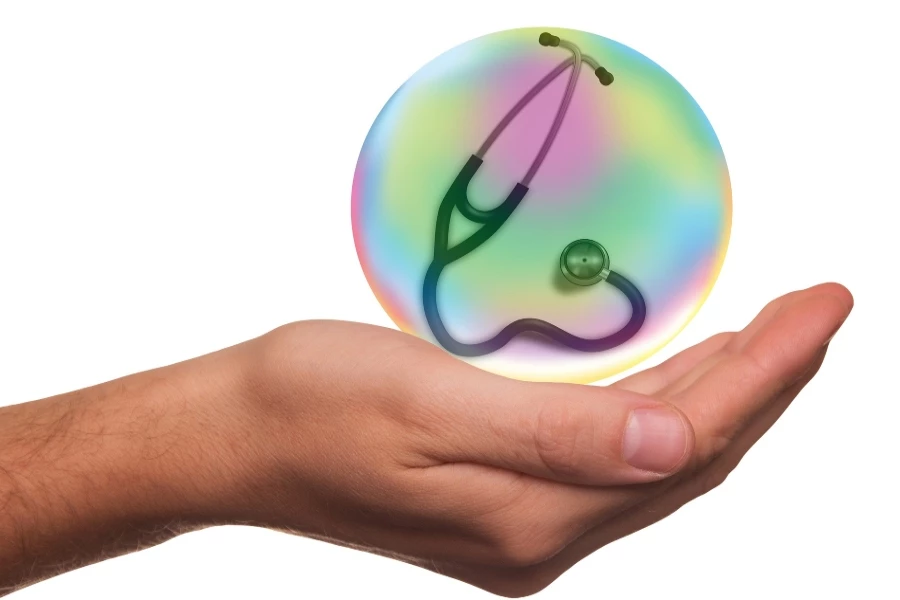
Patient safety is one of the most critical aspects of healthcare. No one wants to be injured or become ill due to their interactions with the medical community. This blog post lists eight ways to keep yourself safe when interacting with your patients or other medical professionals. It will also explain why it’s so important to take these precautions.
Practice Proper Hand Hygiene
Practicing proper hand hygiene is the most basic way to protect your patients from germs. This means washing your hands regularly with soap and water or using an alcohol-based hand sanitizer if soap and water are unavailable. You should also avoid touching your face, especially your eyes, nose, and mouth, as much as possible. If possible, teach your patients to wash their hands regularly as well. You should always stress the importance of hand hygiene because it can prevent the spread of many diseases. For instance, proper hand hygiene can help prevent the spread of influenza, or “the flu.”
Wear Protective Clothing
Another way to protect your patients is to wear protective clothing, such as gloves, gowns, and masks. This is especially important if you are interacting with a patient known to have an infection. Wearing protective clothing can help prevent you from contacting the patient’s bodily fluids, which can contain harmful germs. For example, gloves can protect you from coming into contact with blood or other bodily fluids. Gowns can help to prevent your clothing from becoming contaminated with these fluids. And masks can help to protect you from breathing in any harmful germs that may be present in the air. It’s also essential to wear protective clothing if you are working in an area with a risk of exposure to hazardous materials, such as chemicals or radiation. For instance, you should wear a lead apron when taking X-rays.
Consider Barrier Precautions
Barrier precautions are another way to protect yourself and your patients. Barrier precautions help to create a physical barrier between you and the patient. For instance, you may use barriers, such as plastic sheeting, to protect the patient from coming into contact with your bodily fluids. Barrier precautions can also help to protect you from coming into contact with the patient’s bodily fluids. In some cases, barrier precautions may be used with other infection control measures, such as wearing gloves or a mask. The critical thing you need to consider in setting up barrier precautions is how to protect vulnerable areas, such as your eyes and mouth. Your eyes, in particular, are very susceptible to infection because they are moist and directly connect to your bloodstream.
Use Safety Devices
Many safety devices can help to protect you and your patients. For instance, using needleless systems can help to prevent needlestick injuries. A needlestick injury is when the sharp end of a needle punctures your skin. These injuries can occur when handling used needles or removing a needle from a patient. Needlestick injuries can put you at risk of contracting severe infections, such as HIV or hepatitis C. Another system that can help to prevent needlestick injuries is the sharps container. This is a particular container that is used to dispose of used needles. Using a sharps container is essential because it helps keep the needles away from people who may be tempted to reuse them.
Disinfection And Sterilization
You can also protect your patients by using disinfection and sterilization techniques. Disinfection kills or removes harmful microorganisms from surfaces or objects, while sterilization eliminates all organisms. Selecting the right disinfectants and sterilizers for the job is crucial, as some are more effective against certain types of microorganisms than others. For example, bleach is a very commonly used disinfectant because it effectively kills a wide variety of microorganisms. However, it is essential to remember that bleach is also a corrosive chemical, so it’s important to use it safely. When selecting a disinfectant or sterilizer, you should also consider the level of activity that you need. For instance, a high-level disinfectant is necessary for items that come into contact with mucous membranes or non-intact skin. On the other hand, a low-level disinfectant is adequate for things that come into contact with intact skin.
Learn Proper Body Mechanics
Proper body mechanics is another vital way to keep yourself and your patients safe while working in healthcare. Body mechanics is how you use your body to perform a task. For instance, when lifting a patient, it’s essential to use proper body posture. This means using your legs to lift rather than your back. Good body mechanics can help prevent injuries, such as strains and sprains. It’s also essential to use proper body mechanics when moving patients. For instance, you should always push a patient’s bed rather than pull it. This helps to prevent injuries to your back and shoulders. You can better care for your patients when you are in your best condition.
Get Vaccinated
Another way to protect your patients is to get vaccinated against common diseases. For example, you should get a flu shot every year to help prevent the spread of influenza. You should also consider getting other vaccines, such as the measles, mumps, and rubella (MMR) vaccine. Getting vaccinated not only helps to protect you from diseases, but it also helps to protect your patients. When vaccinated, you are less likely to spread a disease to your patients. If possible, you should also encourage your patients to get vaccinated. Similarly, this will help them stay healthy and reduce the risk of passing a disease on to you.
Educate Yourself And Your Patients
Finally, educating yourself and your patients about infection control is a meaningful way to keep everyone safe. Learning about the different types of infections and how they are spread is essential. You should also be familiar with the signs and symptoms of diseases. This way, you can identify an infection early and take steps to treat it. You should also educate your patients about infection control. For example, you can teach them the importance of hand hygiene and how to wash their hands properly. You can also encourage them to get vaccinated. When you educate yourself and your patients, you can help to prevent the spread of infections.
It’s essential to take steps to keep your patients safe. There are many ways to do this, such as using safety devices, disinfecting and sterilizing surfaces, using proper body mechanics, and getting vaccinated. Taking these steps can help to prevent injuries and the spread of diseases. Rest assured that with careful planning and consideration, you can help keep your patients safe.








